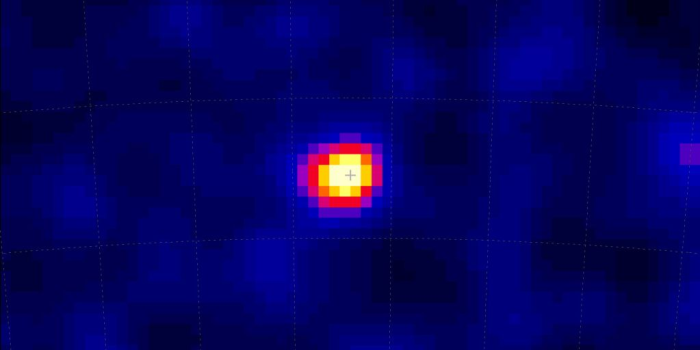Amidst the widespread acclaim for NASA’s monumental James Webb Space Telescope, it’s crucial to recognize that revolutionary astronomical revelations aren’t confined to state-of-the-art technology alone. A striking example is an extraordinary achievement showcased above: the highest-resolution gamma-ray photograph ever captured.
Researchers from Kobe University detailed their experiment published in The Astrophysical Journal, showcasing the highest-resolution photo of gamma rays ever captured. Their focus was the Vela Pulsar, an intriguing celestial object nearly 1,000 light-years away. This pulsar, a compact spinning neutron star resulting from a stellar collapse, stands out for its diminutive size of about 12 miles across and rapid 11 rotations per second.

The Vela Pulsar emits charged particles across the electromagnetic spectrum, including gamma rays, distinguishing it as the highest-energy pulsar known to science. Led by astrophysicist Shigeki Aoki, the Kobe University team utilized bundled sheets of photographic film and a stratospheric balloon, ascending 25 miles into Earth’s atmosphere. The stacked film sheets facilitated tracking the trajectory of gamma ray particles, while the stratospheric position minimized ground interference.
Employing an age-old photographic film method based on radiation’s impact on film darkness, similar to historical applications in detecting radiation, the researchers ensured precise capture of gamma rays from the Vela pulsar. An ingenious method involving subtle shifts in the last three film layers, mimicking clock hands, was devised to overcome timestamping challenges. This technique enabled the construction of a chronology of precise impact times, unveiling the intricate dance of gamma rays.
The outcome? The highest-resolution image of gamma rays ever recorded, depicting Vela’s gamma-ray emissions akin to “a lighthouse at night.” This innovative approach yielded seven million tracks with a remarkable accuracy of 1/10,000 millimetres, surpassing traditional gamma-ray telescopes by 40 times.

Astrophysicist Shigeki Aoki highlighted the broader significance of such experiments in advancing multi-messenger astronomy, emphasizing the importance of simultaneous measurements from various techniques.
While high-tech tools like JWST continue to dominate headlines with their discoveries, the Kobe University experiment underscores the profound impact of low-tech innovation in unravelling the mysteries of the cosmos.


